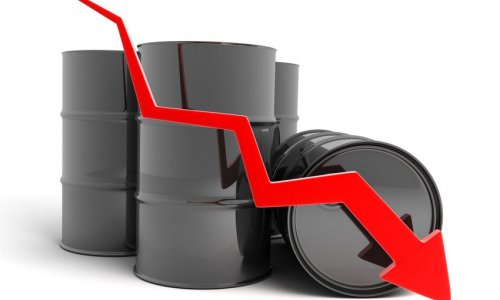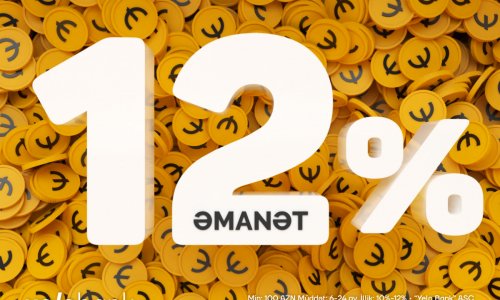Energy ministers from the oil exporters' group Opec gather in Vienna on Thursday for their regular discussions on oil prices.
They have a problem. The price of crude oil is too low for (their) comfort.
In the past, Opec has taken action in similar circumstances, cutting production in an attempt to drive prices higher.
But in this current episode of relatively cheap oil, Opec has been unable to agree any action.
Here is Opec's problem: oil is now trading at about $50 a barrel for Brent crude - a UK type of oil that is widely used as a benchmark. That's less than half the level it reached in June 2014.
The current price is well up from the lows it hit in January of about $27, but it is still low enough to be a problem for Opec members.
For most of these countries oil is the main source of government revenue. Focusing on oil exporters in the Middle East and North Africa the IMF said in a report in April: "The fiscal adjustment [in government spending and taxation] needed to absorb the oil price shock is unprecedented."
Last year, the IMF says, export revenues for this group of oil suppliers fell by $390bn (£266bn), equivalent to 17.5% of their national income, or GDP.
fell by $390bn (£266bn), equivalent to 17.5% of their national income, or GDP.
 fell by $390bn (£266bn), equivalent to 17.5% of their national income, or GDP.
fell by $390bn (£266bn), equivalent to 17.5% of their national income, or GDP.Shale pressure
So why the inaction on Opec's part? Why have they repeatedly failed to agree on collective action to address what is a problem for them all?
When Opec has cut production in the past, it has generally been Saudi Arabia, the group's biggest oil producer, which has made the most substantial moves. The kingdom has been called the swing producer - the one whose decisions are most capable of turning the market round.
This time Saudi Arabia has been reluctant to act alone. Yes, it would prefer higher prices, but it does see a silver lining, some benefit from the weakness in the market.
Cheap oil generates pressure on American shale oil producers. That is an industry that has grown rapidly in the last decade, and it is the major factor behind plentiful supplies of oil that drove prices down from the 2014 high.
Back in April, it did look as though Opec, together with a few other oil producers (including Russia) were finally going to do something to underpin oil prices. Not full-on cuts in production, Opec's traditional price weapon. They were discussing a more modest step, an agreement not to increase output - a production freeze as the idea was called at the time.
Saudi-Iran relations
Just before the meeting many observers (me included) thought they would probably get a deal at the talks in Doha, Qatar.
They failed, and many have suggested this was down to Saudi Deputy Crown Prince Mohammed bin Salman. He is the King's son - many say his favourite son - and he has taken the central role in Saudi Arabia's efforts to diversify its economy and reduce its dependence on oil.
One issue that is sure to have concerned him is that Iran was unwilling to take part, insisting instead that it would continue to boost production after the lifting of international sanctions related to the country's nuclear programme.
One effect of any production restraint by Saudi Arabia would therefore have been to leave more room for Iran to sell its oil.
for Iran to sell its oil.
 for Iran to sell its oil.
for Iran to sell its oil.Helping Iran out is not on Riyadh's agenda.
Quite apart from the economic aspect of Saudi Arabia's reluctance to give its neighbour across the Gulf a commercial favour, there is a political element.
The two countries are longstanding regional rivals, and have found themselves backing opposing sides in a number of Middle East conflicts.
Perhaps the pressure on Opec is easing a little. The oil price has stabilised for now, at least, at a level close to $50.
Unintended disruptions to supplies have achieved something Opec couldn't do by design. The wildfires in Canada's oil-producing regions, militant attacks on the industry in Nigeria, and the persistent turmoil in Libya have made their mark on the global oil market.
Opec's power waning
The political situation in Venezuela is also a factor affecting oil supplies. There is a clear risk of more severe disruption there, and it would certainly affect oil prices if Venezuelan production were to fall sharply.
The International Energy Agency said the market looks likely to be close to balance in the second half of this year. In other words, the excess supply that has undermined prices may be coming to an end.
One problem for Opec is that, if this supply excess is ending and it pushes prices higher, it would help American shale oil producers.
Many companies that have been hit by the lower prices of the last 18 months could become profitable again.
If they were to expand production that could well have the effect of limiting any price rise that might otherwise have been on the way.
There's little chance of decisive action at this Opec meeting.
Currently, the group doesn't have a formal production ceiling to cut. At the Opec conference in December members couldn't agree even to reaffirm the previous production level.
Opec is not the force in global oil markets that it once was.
(BBC)
www.ann.az
Follow us !











